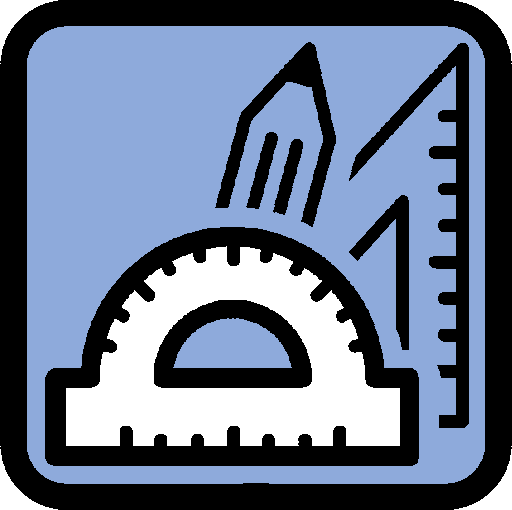MAT-04.GM.G.01

|
4th Grade (MAT) Targeted Standard
(GM) Geometry and Measurement
(G) Geometry
Learners will compose and classify figures and shapes based on attributes and properties; represent and solve problems using a coordinate plane.
|
MAT-04.GM.G.01 Identify, label, and draw points, lines, line segments, rays, and angles (right, acute, obtuse).
 Proficiency Scale Proficiency Scale
Progressions
Two-Dimensional Shapes
- MAT-00.GM.G.01 Name shapes and identify them as two-dimensional (squares, circles, triangles, rectangles)regardless of their orientations or overall size.
- MAT-00.GM.G.03 Compare and classify two-dimensional shapes to describe their similarities, differences, and attributes (squares, circles, triangles, rectangles).
- MAT-01.GM.G.01 Name shapes and identify them as two-dimensional (trapezoids, rhombuses, pentagons, hexagons, octagons).
- MAT-01.GM.G.03 Determine geometric attributes of two-dimensional and three-dimensional shapes.
- MAT-02.GM.G.01 Identify two-dimensional shapes (parallelograms and quadrilaterals).
- MAT-02.GM.G.03 Compose geometric shapes having specified geometric attributes, such as a given number of edges, angles, faces, vertices, and/or sides.
- MAT-03.GM.G.01 In two-dimensional shapes, identify lines, angles (right, acute, obtuse), and perpendicular and parallel lines.
- MAT-03.GM.G.02 Sort quadrilaterals into categories based on attributes.
- MAT-04.GM.G.01 Identify, label, and draw points, lines, line segments, rays, and angles (right, acute, obtuse).
- MAT-04.GM.G.02 Classify two-dimensional figures based on the presence or absence of parallel or perpendicular lines or the presence or absence of angles of specified size.
- MAT-05.GM.G.01 Classify two-dimensional figures in a hierarchy based on properties.
- MAT-10.GM.01 Know precise definitions of angle, circle, perpendicular line, parallel line, and line segment based on the undefined notions of point, line, and plane.
- MAT-10.GM.09 Prove and apply theorems about lines and angles.
- MAT-10.GM.10 Prove and apply theorems about triangles.
- MAT-10.GM.11 Prove and apply theorems about parallelograms.
- MAT-10.GM.34 Identify the shapes of two-dimensional cross-sections of three-dimensional objects and identify three-dimensional objects generated by rotations of two-dimensional objects.
Angles/Triangles
- MAT-03.GM.G.01 In two-dimensional shapes, identify lines, angles (right, acute, obtuse), and perpendicular and parallel lines.
- MAT-04.GM.G.01 Identify, label, and draw points, lines, line segments, rays, and angles (right, acute, obtuse).
- MAT-04.GM.M.07 Recognize angle measures as additive and solve addition and subtraction problems to find unknown angles on a diagram.
- MAT-07.GM.GF.01 Draw triangles from given conditions using appropriate tools. Defend whether a unique triangle, multiple triangles, or no triangle can be constructed when given three measures of angles or sides.
- MAT-07.GM.GF.02 Describe the angle-pair relationships: supplementary angles, complementary angles, vertical angles, and adjacent angles. Solve for an unknown angle in a figure by applying facts about these angles.
- MAT-08.GM.GF.04 Describe the following angle-pair relationships: interior and exterior angles of triangles and angles formed when a transversal cuts parallel lines or intersecting lines. Solve for an unknown angle in a figure by applying
facts about these angles.
- MAT-08.GM.GF.05 Describe the relationship between the leg length and the hypotenuse length of a right triangle. Determine whether a triangle is a right triangle using this relationship.
- MAT-08.GM.GF.06 Apply the Pythagorean Theorem to determine unknown side lengths in right triangles in two and three dimensions on and off a coordinate plane, including authentic problems.
- MAT-10.GM.01 Know precise definitions of angle, circle, perpendicular line, parallel line, and line segment based on the undefined notions of point, line, and plane.
- MAT-10.GM.09 Prove and apply theorems about lines and angles.
- MAT-10.GM.10 Prove and apply theorems about triangles.
- MAT-10.GM.18 Recognize how the properties of similar right triangles allow for trigonometric ratios to be defined and determine the sine, cosine, and tangent of an acute angle in a right triangle.
- MAT-10.GM.19 Explain and use the relationship between the sine and cosine of complementary angles.
- MAT-10.GM.20 Solve applied problems involving right triangles using trigonometric ratios, the Pythagorean Theorem, and special right triangles (30º, -60º, -90º, and 45º-45º-90º).
- MAT-10.GM.21 Solve unknown sides and angles of non-right triangles using the Laws of Sines and Cosines.
- MAT-10.GM.23 Construct the incenter and circumcenter of a triangle. Relate the incenter and circumcenter to the inscribed and circumscribed circles.
- MAT-10.GM.24 Construct a tangent line from a point outside a given circle to the circle.
- MAT-10.GM.26 Recognize that the radian measure of an angle is the ratio of the length of the arc to the length of the radius of a circle.
- MAT-12.AR.F.16 Extend right triangle trigonometry and apply knowledge of the unit circle to determine values of sine, cosine, and tangent for multiples of π/3, π/4, and π/6.
- MAT-12.AR.F.17 Use the Pythagorean Identity sin² (θ) + cos² (θ) = 1 to find sin (θ), cos (θ), or tan (θ) given sin (θ), cos (θ), or tan (θ) and the quadrant of the angle.
- MAT-12.GM.03 Determine and apply appropriate formulas to solve right and non-right triangle problems in context
|


